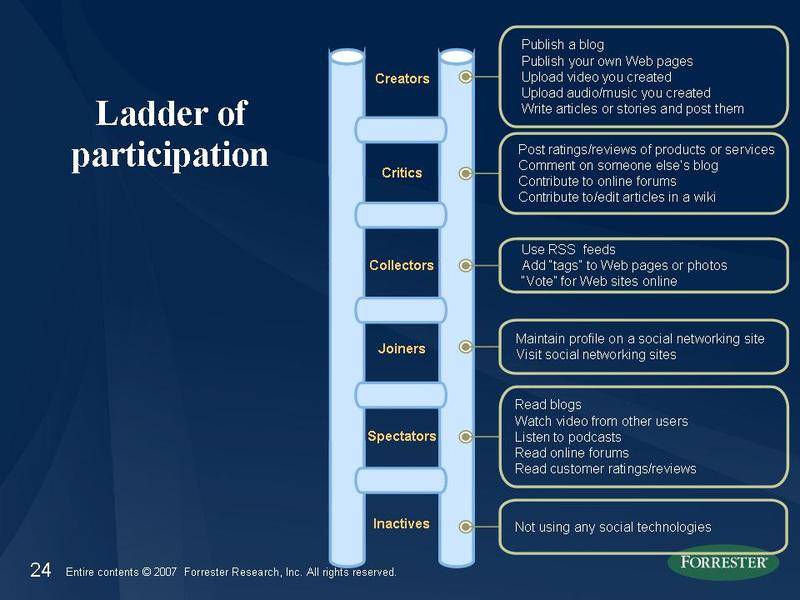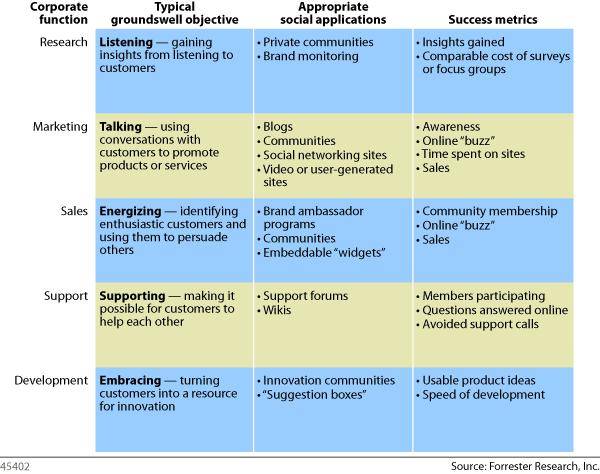Lore
Social Strategies For Revolutionaries: SXSW Roundup
You know your company needs to be involved in social technologies, but where do you start?
At the “Social Strategies For Revolutionaries” session, Charlene Li, a Forrester research analyst (my favorite of the group), gave us the strategic framework for creating a social strategy that will appeal to executives and your target audience.
If you want to dig deeper, she’s got a book called Groundswell coming out soon. This presentation was based on those findings. Here are some choice notes.
What’s The “Groundswell” in Social?
Definition: people using technologies to get the things they need from each other, rather than from traditional institutions like corporations.
What Process Can I use to Create a Social Strategy?
Try using the POST process (people, objectives, strategy, technology). Here’s a couple highlights from the first two. Notice technology is LAST!
People: Assessing your customers’ social activities is key. Why start with Myspace/Facebook if none of your customers are there?
To help with this, use what’s called the “social technographics ladder,” combined with knowledge of your customers age.

Obviously, age is a huge driver of adoption level, but there’s evidence more and more boomers are starting to become joiners rather than just spectators.
Objectives
Based on your objectives, you’ll want to deploy a social strategy tailored to what you want to accomplish. I had originally typed all these out, but here’s the handy chart to show what they mean, along with the tools to help out and the metrics to use to measure success.

How Do You Get Started?
It’s easy to get overwhelmed. So start small. Using the POST process above, maybe you discover your customers all over the blogs discussing flaws with your product. So you could set up your own blog to help answer those issues, or even create a team (like Dell) whose sole responsibility is to root out those negative stories and turn them into a conversation.
Other important parts to keep in mind, specifically related to internal cultures and staffing:
- Find people most passionate about developing relationships
- Educate executives
- Put someone important in charge
- Define the box with policies and process
- Make it safe(r) to fail
Final notes
- Set up your framework and process
- Start small, think big
- Make social strategy the responsibility of every employee
- Be patient – cultural change takes time